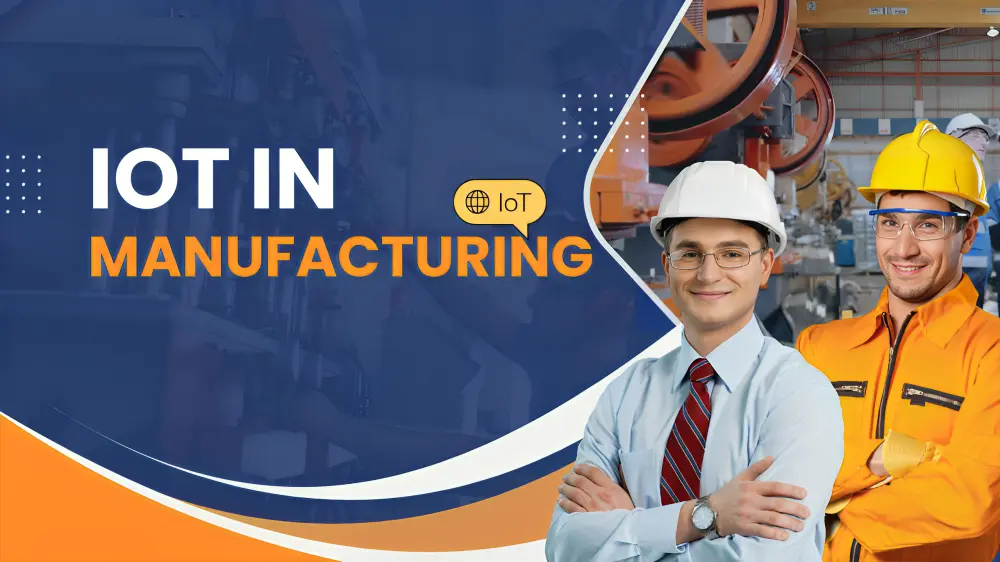Technological developments are changing all our lives in this fast-paced world, and the manufacturing industry is no different. The Internet of Things (IoT) has revolutionized traditional manufacturing processes in a new era of efficiency, productivity, and innovation. We’ll dive into the intriguing realm of IoT in manufacturing in this blog post and examine how it’s changing the sector’s landscape.
How is used IoT in Manufacturing?
IoT manufacturing systems allow managers and analysts to gather and share data by connecting sensors and devices to the internet. For illustration, let’s examine mass customization. Due to their complexity, these operations call for a practical solution. With scheduling and forecasting, IoT enables mass customization and serves as a real-time data source. Big data may be gathered and analyzed thanks to sensors, and manufacturers can utilize this information to better design and produce goods that are timely and suited to the unique needs and preferences of their customers.
Fast and efficient manufacturing reduces the product cycle time. Consider the Harley-Davidson brand. By rearranging production and optimizing the layout of its manufacturing facilities, it leveraged the Internet of Things to cut the time it took to produce a single motorcycle from roughly three weeks to six hours.
What are the benefits of IoT manufacturing?
- Enhanced worker safety
- Enhanced effectiveness and output
- Better maintenance and less downtime
- Decreased expenses for waste and inventory management
- Better product design and quality control More supply chain visibility thanks to real-time data
How IoT is Transforming the Manufacturing Industry
- Predicts Early Malfunctions: An analysis firm claims that 82% of businesses have encountered unscheduled downtime. In the manufacturing industry, unplanned downtime can cost a business up to $260,000 per hour. For manufacturing companies, machine malfunctions and downtime can be extremely important. They may also put frontline employees in danger. Many sensors found in IoT devices allow them to keep an eye on voltage, currents, vibration, temperature, and other variables. Thus, by providing early warning indicators of any anticipated malfunctions, these sensors can contribute to a safer workplace.
- Higher Margins and Customer Satisfaction Levels: The use of IoT and connected products presents manufacturers with exciting opportunities. The first advantage of related products is that they improve the current service delivery. Remote diagnostics shorten repair times and boost customer satisfaction, strengthening relationships with clients. Early warning and detection signals can therefore influence future product quality improvements. Additionally, the new services can guarantee better customer satisfaction ratings and higher markings.
- Improved Asset Management via Connected Supply Chain: The expectations of manufacturers for customer service have been rising. A crucial requirement is a quicker delivery time. To meet the demands for faster delivery, manufacturers have been investigating micro-logistics networks. Managing inventory positions is made easier by the application of IoT at the asset level in the networked supply chain. Gain more insight into the real inventory across the intricate logistics network as well.
- Implements Operational Intelligence: Experts believe that autonomous machinery will play a major role in manufacturing in the future, replacing labor-intensive and time-consuming human labor. Intelligent networks that communicate and coordinate with one another with little assistance from humans are made possible by the connection of machines.
What are some challenges of IoT in Manufacturing?
- Security concerns: Since most data is gathered and kept on cloud servers, hackers and data breaches are a concern. If manufacturers want to prevent sensitive data from getting into the wrong hands, they must implement enhanced safety procedures and genuinely work to make sure that their systems are adequately secured.
- Data overload: Managing and making sense of all the data on your physical servers or in the cloud can be difficult. To enhance their operations, manufacturers must have systems in place for storing, analyzing, and acting on data.
- Implementation costs: IoT technology frequently necessitates a trial-and-error approach to product development, making it costly to deploy and maintain. Manufacturers must consider the system’s advantages and disadvantages before deciding if it is right for their company.
- Change management: Employee resistance is a constant when a new system is implemented. Manufacturers must devote sufficient time to teaching staff members how to operate the system.
Blending IoT with AR and VR Bringing the Real and Digital Worlds Together
- Managing equipment: IoT sensor data on equipment conditions can be used to create virtual elements and aid in the real-time visualization of malfunctions and crashes.
- Managing spaces: AR can assist in determining the best locations for factory inventory and in designing safe routes for employees to travel through facilities.
- Educating employees: Using IoT data, a virtual prototype of a piece of machinery, equipment, or a product can be made, and this can assist in simulating how to use them correctly for staff training.
Conclusion
IoT in Manufacturing is a revolutionary force that is changing the manufacturing industry as we know it, not just a catchphrase. Manufacturers can seize new opportunities, promote operational excellence, and maintain an advantage over rivals in a dynamic and increasingly complex global marketplace by utilizing data and connectivity.





